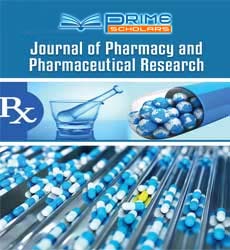Commentry - (2022) Volume 6, Issue 5
Importance of Bioavailability and Bioequivalence of Drugs
Antonio Kaseb*
Department of Pharmacy, University of Dhaka, Bangladesh
*Correspondence:
Antonio Kaseb,
Department of Pharmacy, University of Dhaka,
Bangladesh,
Email:
Received: 03-Oct-2022, Manuscript No. IPIPR-22-14546;
Editor assigned: 05-Oct-2022, Pre QC No. IPIPR-22-14546 (PQ);
Reviewed: 19-Oct-2022, QC No. IPIPR-22-14546 ;
Revised: 24-Oct-2022, Manuscript No. IPIPR-22-14546 (R);
Published:
31-Oct-2022, DOI: 10.21767/IPIPR.22.6.22
INTRODUCTION
Bioavailability refers to the extent and speed with which the active
part (drug or metabolite) enters the systemic circulation and
thus accesses the site of action. Chemical equivalence indicates
that the medicines contain the same active ingredient in the same
quantity and meet current official standards; however, the inactive
ingredients in medicines may differ. Bioequivalence indicates that
pharmaceutical products, when administered to the same patient
at the same dosage regimen, result in equivalent concentrations
of the drug in plasma and tissues. Therapeutic equivalence means
that drugs, when given to the same patient on the same dosing
schedule, have the same therapeutic and adverse effects. The bioavailability
of a drug is largely determined by the properties of the
dosage form, which partly depend on its design and manufacture.
Differences in bioavailability between formulations of a particular
drug can have clinical significance; therefore it is essential to know
whether drug formulations are equivalent.
Description
Bioequivalent products must be therapeutically equivalent. Therapeutic
non-equivalence (eg: more side effects, less efficacy) is usually
identified during long-term treatment when patients stabilized
on one formulation receive a non-equivalent substitute. Chemical
reactions that reduce absorption can reduce bioavailability. They
include complex formation (eg: between tetracycline and polyvalent
metal ions), hydrolysis by gastric acid or digestive enzymes
(eg: hydrolysis of penicillin and chloramphenicol palmitate), conjugation
in the gut wall (eg: sulfoconjugation of isoproterenol), adsorption
to other drugs (eg: digoxin to cholestyramine) and metabolism
by luminal micro flora. Insufficient time for absorption in the
gastrointestinal (GI) tract is a common cause of low bioavailability.
Oral bioavailability is the fraction of an orally administered drug
that reaches the systemic circulation. After intravenous administration,
a drug is immediately and completely available in the
bloodstream and can be distributed through the systemic circulation to the point where a pharmacological effect occurs. When
a drug is administered orally, it must cross other barriers to reach
systemic circulation, which can significantly reduce the final volume
of a drug in the bloodstream. Oral bioavailability is one of the
most important properties in drug design and development. The
high oral bioavailability reduces the amount of an administered
drug needed to achieve the desired pharmacological effect and
thus could reduce the risk of side effects and toxicity. Low oral bioavailability
can result in low efficacy and greater inter-individual
variability, leading to unpredictable drug responses.
Conclusion
The plasma concentration of the drug increases with the degree of
absorption; the maximum (peak) plasma concentration is reached
when the rate of elimination of the drug is equal to the rate of absorption.
Determining bioavailability based on peak plasma concentrations
can be misleading because drug elimination begins as
soon as the drug enters the bloodstream. Peak time (when peak
plasma drug concentration occurs) is the most widely used general
index of absorption rate; the slower the absorption, the later
the rush hour. For drugs that are primarily excreted unchanged in
the urine, bioavailability can be estimated by measuring the total
amount of drug excreted after a single dose. Ideally, urine is
collected over a period of 7-10 elimination half-lives to achieve
complete urinary recovery of absorbed drug. After multiple administrations,
the bioavailability can be estimated by measuring
the unchanged active substance recovered in the urine over a 24
hour period at steady state.
Acknowledgement
The author is grateful to the journal editor and the anonymous
reviewers for their helpful comments and suggestions.
Conflict Of Interest
The author declared no potential conflicts of interest for the research,
authorship, and/or publication of this article.
Citation: Antonio K (2022) Importance of Bioavailability and Bioequivalence of Drugs. J Pharm Pharm Res.6:22.
Copyright: © 2022 Kaseb A. This is an open-access article distributed under the terms of the Creative Commons Attribution
License, which permits unrestricted use, distribution, and reproduction in any medium, provided the original author and source
are credited.

